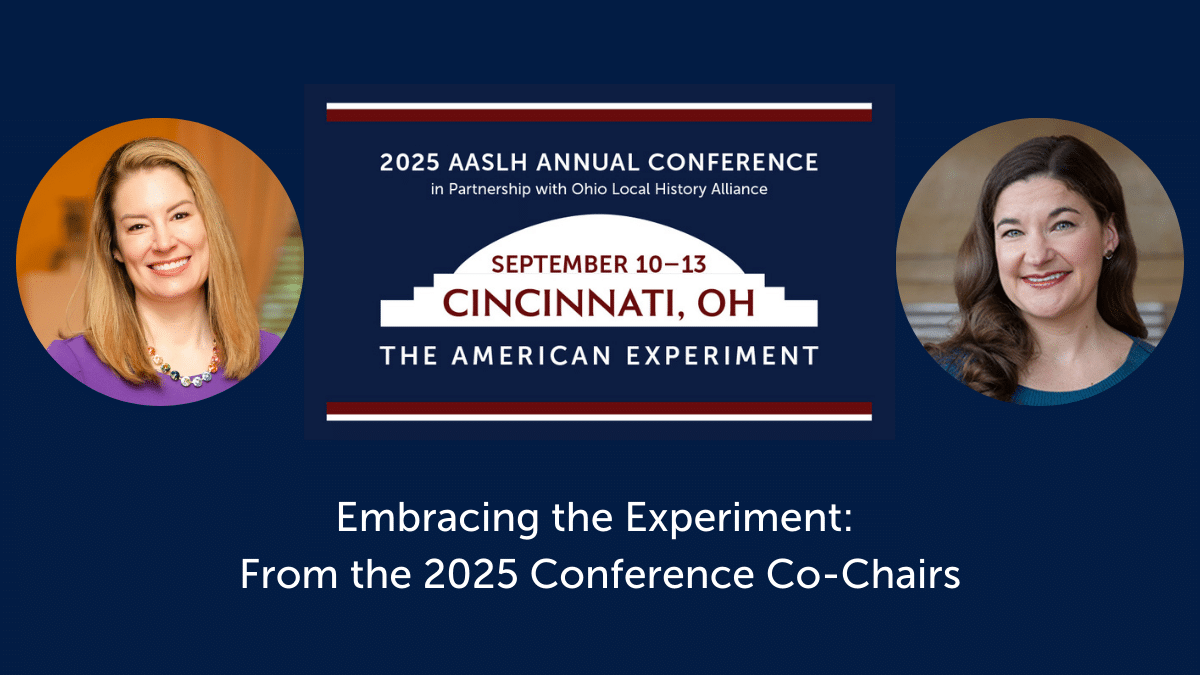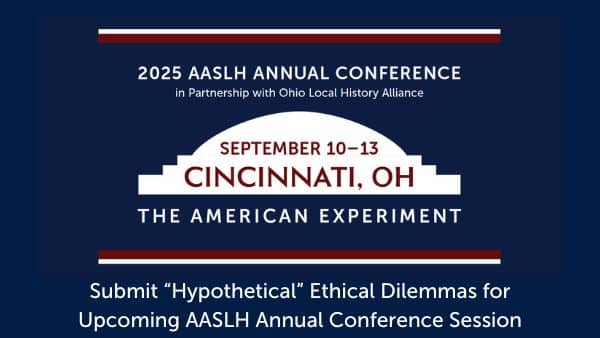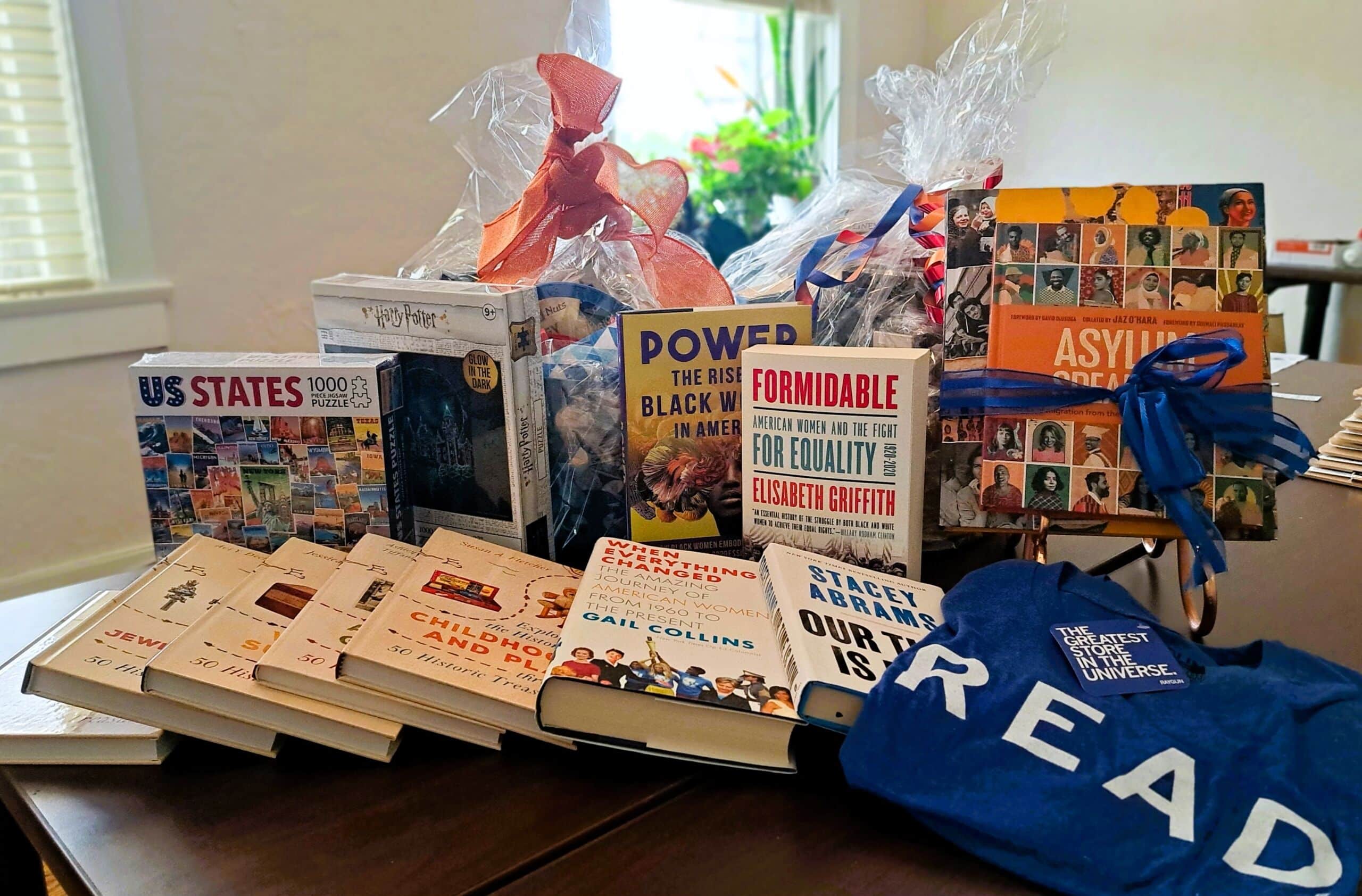
AASLH has partnered with the National Council on Public History to invite proposals for an NCPH‐sponsored Poster Session at the 2017 AASLH Annual Meeting in Austin, Texas. We are building on NCPH’s model for public history presentations about projects that use visual evidence. This is an alternative for presenters eager to share their work through one‐on‐one discussion, can be especially useful for work‐in progress, and may be a particularly appropriate format for presentations where visual or material evidence represents a central component of the project.
When is the Poster Session?
The poster session will be held on Friday, September 8, at the AT&T Conference Center from 9:45‐10:45 am. Set‐up will begin an hour before the Poster Session begins.
How to Submit a Proposal
Proposals must be submitted electronically (in ONE PDF document) and include:
1. Contact information, including participant(s’) name(s), address(es), email(s), phone number(s), and affiliation(s), and a brief explanation of needs. (You may request ½ of a 6’ table, access to one electrical outlet, and/or an easel and cardboard on which to display your poster.) Wireless internet access will be available. Participants must provide own computer if one will be used in the presentation. Due to limited space, projectors may not be used during the poster presentation.
2. An abstract of no more than 300 words (including title) that explains and promotes the project. Be persuasive! Imagine that the audience for the proposal abstract is a museum visitor, potential funding agency, recalcitrant policy board or client, or fractious community group.
3. A one‐page c.v. or resume for each participant.
4. You are required, to include a simple one‐ or two‐page visual mock‐up of the display (e.g., created in PowerPoint, Photoshop, or Publisher, etc. and saved as a PDF).

How Will Your Proposal Be Judged? The review committee will consider the persuasiveness of your abstract, the persuasiveness/quality of your visual presentation, and your project’s relation to major issues and questions in public history and the historical community.
Deadline: June 1. Extended to June 10!
Email your proposal to Aja Bain, [email protected] with the subject line “2017 Poster.” You will receive a confirmation email within three business days. If you do not receive a confirmation email, contact the AASLH office as your proposal may not have been received. You will receive notification of whether or not your poster has been accepted by June 30, 2017.
Why is the Poster Session important?
Posters give you a way to display and discuss your project‐based work in a format that is interactive and collegial. Posters are also a perfect venue to show off the material and visual work of historians and public historians. Posters are often a way to present preliminary data on a research topic and gather advice, and we understand that most posters for this conference will represent work that is complete, but we encourage students and advisors to present work as part of multi‐year or ongoing projects so they can solicit advice and resources at the conference.
Guidelines
These guidelines are an attempt to standardize the posters, leveling the playing field for all presenters, and hopefully, reducing the costs involved (especially the cost of shipping.) However, we are keenly aware of the need for creative license in creating the posters and do not want to quash anyone’s creativity. We ask that presenters stick to the size and material guidelines for the poster. Upon request in your proposal, one‐half of a six foot table will be provided where groups can display websites, video, audio, objects, and other supporting materials. *Please note that internet access will be available for the poster session. However should service be interrupted for any reason, you may wish to demonstrate any websites or videos to your hard drive so that you are able to navigate the site without internet access.
What are the dimensions of a poster? No larger than 36” x 48”.
What materials should I use? Use laminated paper or poster paper. If you will need space to hang a poster, please be sure to request an easel in your proposal.
Formatting and Content Advice
A good poster should introduce your topic; research questions or goals, methods, and/or best practices, and what was accomplished; and what you learned. Be sure to include the following:
- Give the poster a title.
- Use images to illustrate your points.
- Caption the photos with a title, photographer, and date.
- Keep text brief. Edit carefully. The test of a good poster is if someone can skim it in a minute and understand your main points.
- Use wallpaper and graphics to enliven the look of the poster.
- Print out all text. Do not hand letter.
- Consider making copies of your poster as handouts. This will mean shrinking the poster to legal‐sized copies. Observers often want something to take away.
- Provide your contact information so folks can reach you later with additional questions, resources, and/or
suggestions.
Printing and Shipping Advice
You have a few options for printing and shipping. You may print the poster at home, roll it in a poster tube, and ship it to the AT&T Conference Center. (More details will be provided closer to the annual meeting.) You may also print your poster at home and carry it on the plane. If you do not wish to ship or transport the poster, you may email your poster file to a print shop in Austin and pick it up there.
Presentation Advice
Be prepared to give a brief oral introduction to the project and answer questions. You are there to engage people. Have fun!




